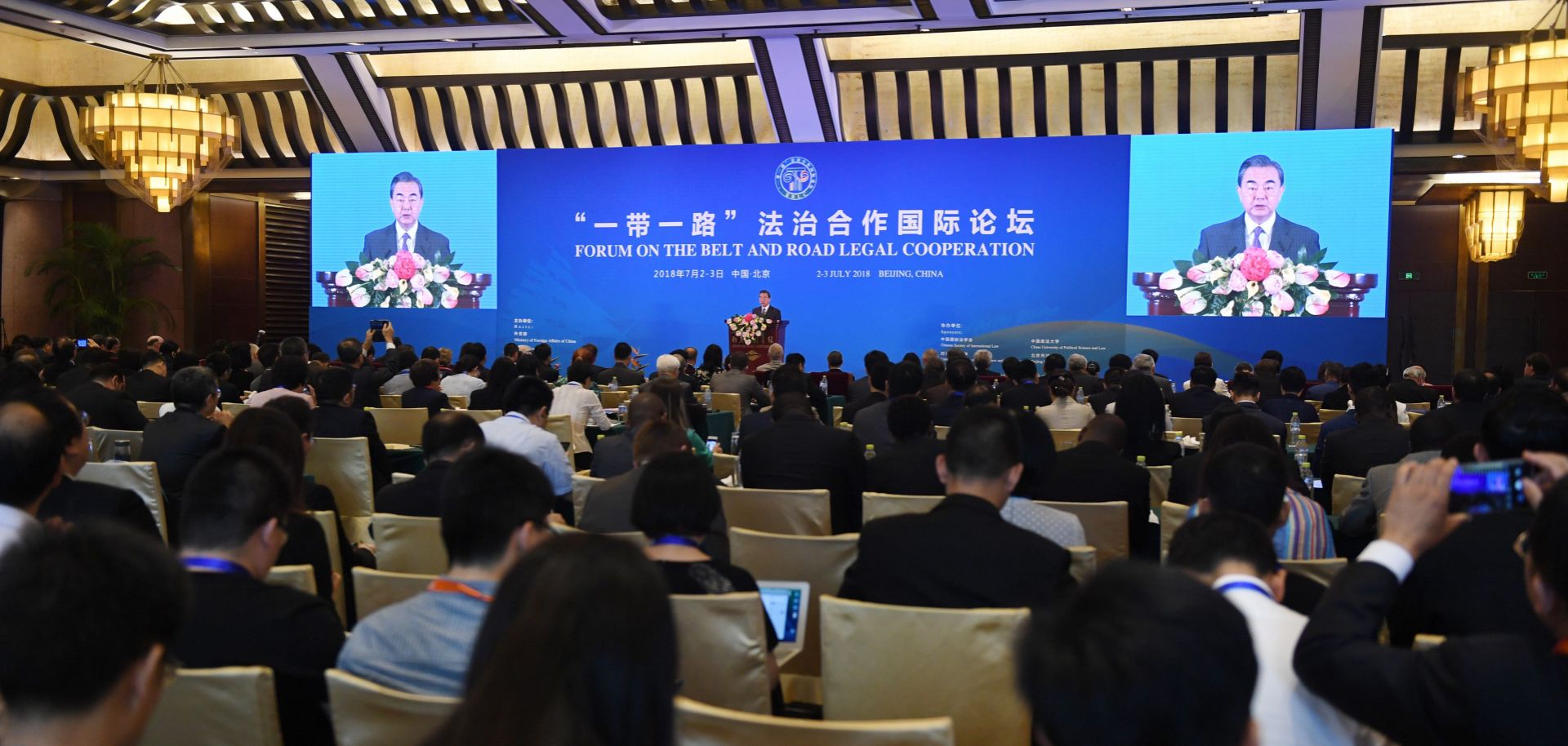ASSESSMENTS
China Changes Gears on the Belt and Road Initiative
Apr 26, 2019 | 05:45 GMT

Chinese Foreign Minister Wang Yi speaks during the opening session of the Belt and Road Forum on Legal Cooperation at the Diaoyutai State Guesthouse in Beijing on July 2, 2018. China is seeking to sweeten the pot to convince countries along the BRI route not to abandon the initiative.
(GREG BAKER/AFP/Getty Images)
Highlights
- Mounting concerns over Beijing's Belt and Road Initiative will not deter China from doubling down on its overseas infrastructure expansion, as the country seeks to expand its export market amid an economic slowdown.
- Beijing, however, will seek to allay the concerns of participating countries by renegotiating costs and attracting third-party investors.
- The developing world could also gain more options in terms of infrastructure projects as China's major competitors, including the United States and the European Union, also plan similar initiatives.
Subscribe Now
SubscribeAlready have an account?
